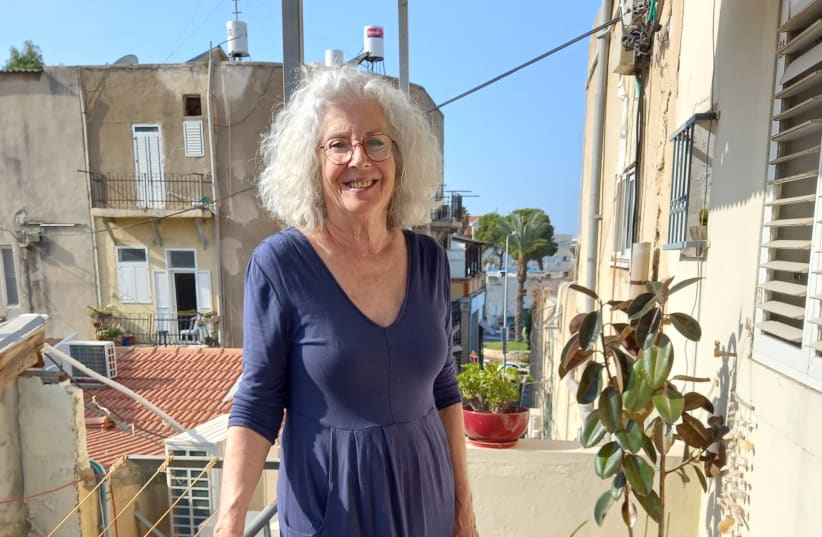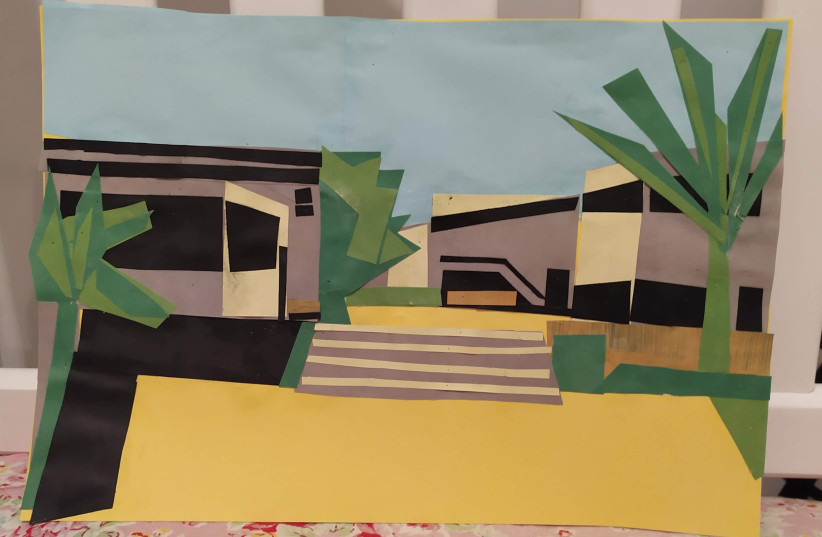Most retirees experience change for better or worse when they leave their workplace. But generally, they remain in their own residence near their friends and neighbors and continue their routine activities, albeit with more time to develop hobbies or do voluntary work.
For Lauren Kedem, however, retirement meant moving out of her residential teaching job at Hadassah/Meir Shfeyah Youth Aliyah village and settling in a diverse and heavily populated neighborhood, Wadi Nisnas, in Haifa.
New-York born Lauren trained as a special education teacher. After finishing her Masters in 1982, she came to Israel to attend an ulpan at Kibbutz Ein Dor. “I made many friends there, particularly amongst the older founders, the real pioneers,” she says. “In New York I was a feminist and a pacifist, but was disconnected from Zionism and Jewish education.
Lauren then describes her disenchantment with the extreme left and the increasing antisemitism. “I realized that I did have Jewish values, and in 1983 made aliyah,” she reflects. “It was the easiest aliyah.”
Lauren shared an apartment in the Baka neighborhood of Jerusalem and had an interesting job teaching in a school for children on the spectrum. She then met her future husband and they had a son and a daughter.
In 1989 they started working and living at Hadassah/Meir Shfeyah near Zichron Yaakov. “I started as a house mother until my Hebrew improved and then became a teacher there,” she says. “I really learned there what it is to be Israeli.”
The couple eventually divorced, an emotionally traumatic experience, but Lauren continued working and living in the village, a career that lasted 30 years.
“It was a place built on ideals with very diverse groups of young people who learn to respect each other.”
This was one of the original seven agricultural settlements established by Baron Rothschild, opened in 1923. In 1933, Youth Aliyah was founded by Recha Freir and Henrietta Szold to rescue Jewish children from the Nazis. Hadassah/Meir Shfeyah was the perfect place to give refuge to these children, many of whom were eventually left as orphans.
Lauren, who still does public relations for Meir Shfeyah, had discovered a huge amount of historic material in the archives, and helped to put it in some sort of order.
Until the 1960s, the primary work of the village was to absorb new immigrant children who had nowhere to go.
“In the ’70s and ’80s, it evolved into a refuge for disadvantaged children and those at risk. Multi-ethnic children from low socioeconomic families received special education so that they could graduate school and support themselves.”
Four years ago, Lauren retired and started to examine her options. She found an apartment in an old stone building in Wadi Nisnas, a neighborhood as diverse as that in the school where she worked so many years. “I felt I had come from a village to a village,” says Lauren. “I feel the city around me, people are friendly, talk to me in the shops and when I walk the dog, although I have total privacy.”
During the lockdown she did not feel isolated, knowing she could always rely on a neighbor to help if necessary.
“Wadi Nisnas is primarily an old-established Christian and Palestinian neighborhood where family values, respect for neighbors and visitors are heartfelt and tangible. Of course the riots in May were very scary, but it was obvious that the Arabs who rioted and the Jews who retaliated were bused in from elsewhere as indeed happened in Acre.”
Lauren says that after the riots, the residents of Wadi Nisnas renewed their commitment to co-existence, and told her that the incitement to violence would not break their bonds with their Jewish neighbors.
Lauren’s artistic talents flourished as she moved into the new apartment. She explained that in 1948, many homes in the Hadar and lower Hadar area were split into small dark rooms in order to house the large immigration of Holocaust survivors. But when Lauren entered the apartment she bought she felt that it had been loved and well-cared for. It still had some original features and two sunny terraces that gave her more living space. She opened up the small rooms, raised the ceiling to its original height, creating a spacious living and kitchen area, two large bedrooms and an elegant bathroom, putting her very individual ideas into the furnishings and accessories.
“Retirement was a gift,” declares Lauren. “At the school, I was so tired after teaching that I had no time for outside activities. But in Haifa I signed up for the cinema and museums and walking tours, I attended courses in art school – there is so much potential in the city.”
Corona stopped all this outside activity, but Lauren enjoyed being home. And that was when she started creating collages, beautiful collections depicting family history, and places that she had loved, her dog, and abstracts using vibrant colors. “It was therapy for me,” she said. “If I get stressed I start cutting and gluing paper.”
Pride of place goes to her gallery of collages, her favorites displayed in her living space but altogether she has created nearly 300 pieces.
A complete change of lifestyle can be a challenge for the strongest of people, but Lauren’s talents and optimism have provided her with resources and fulfillment.■


